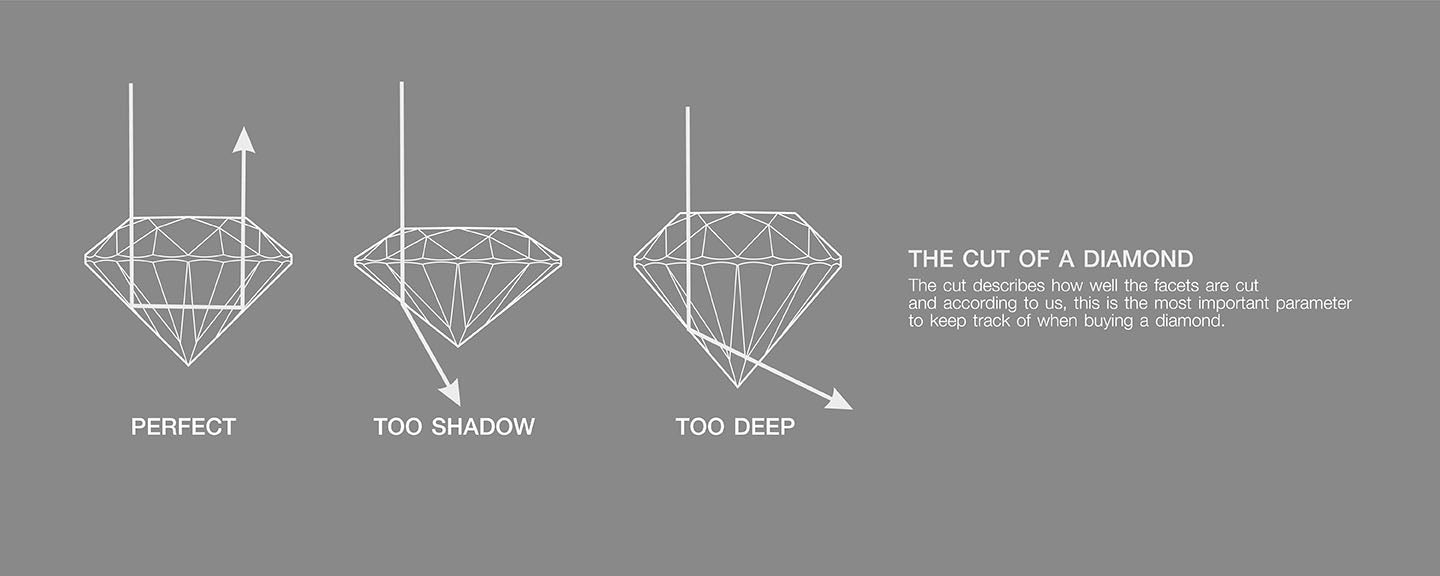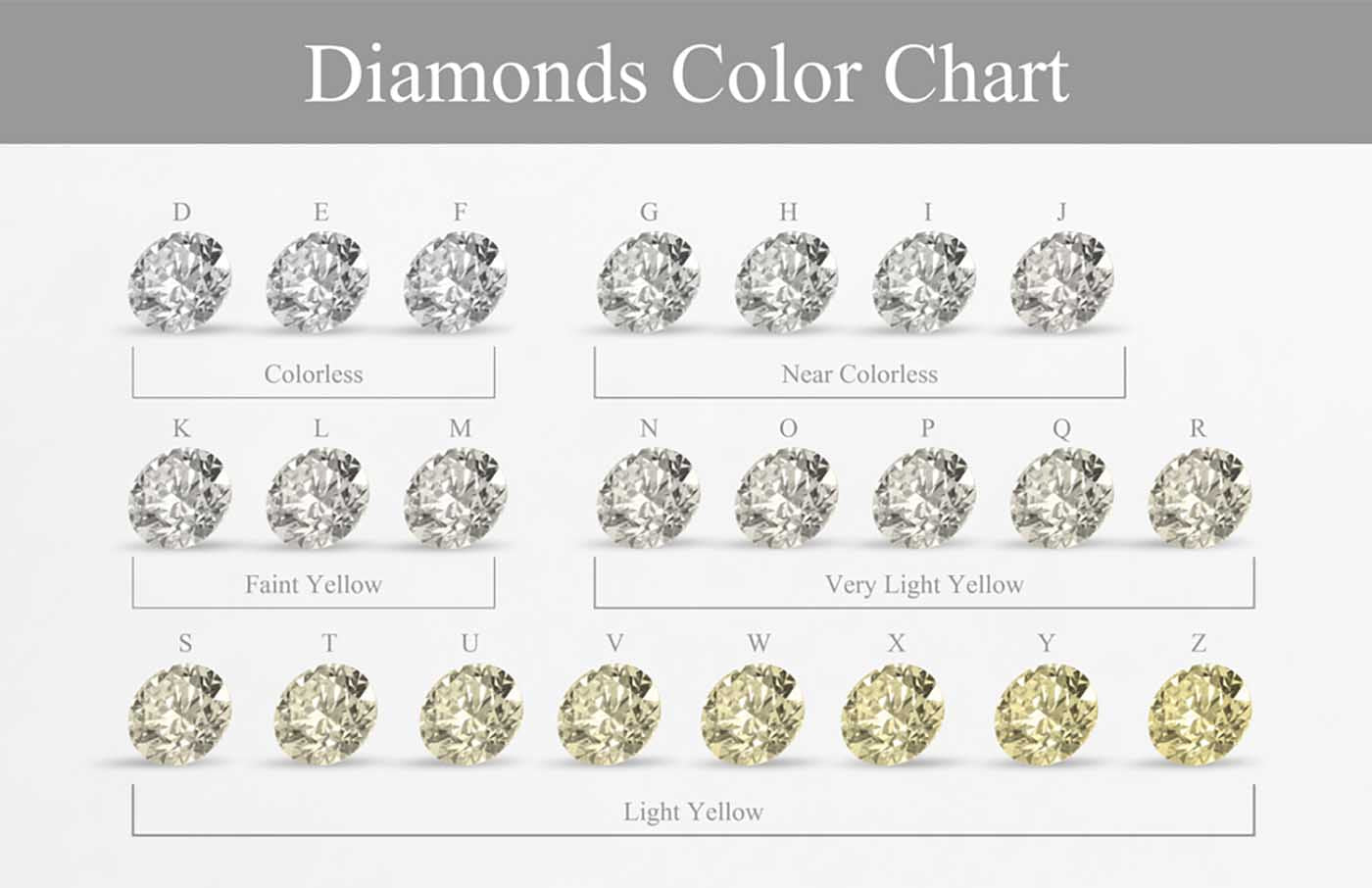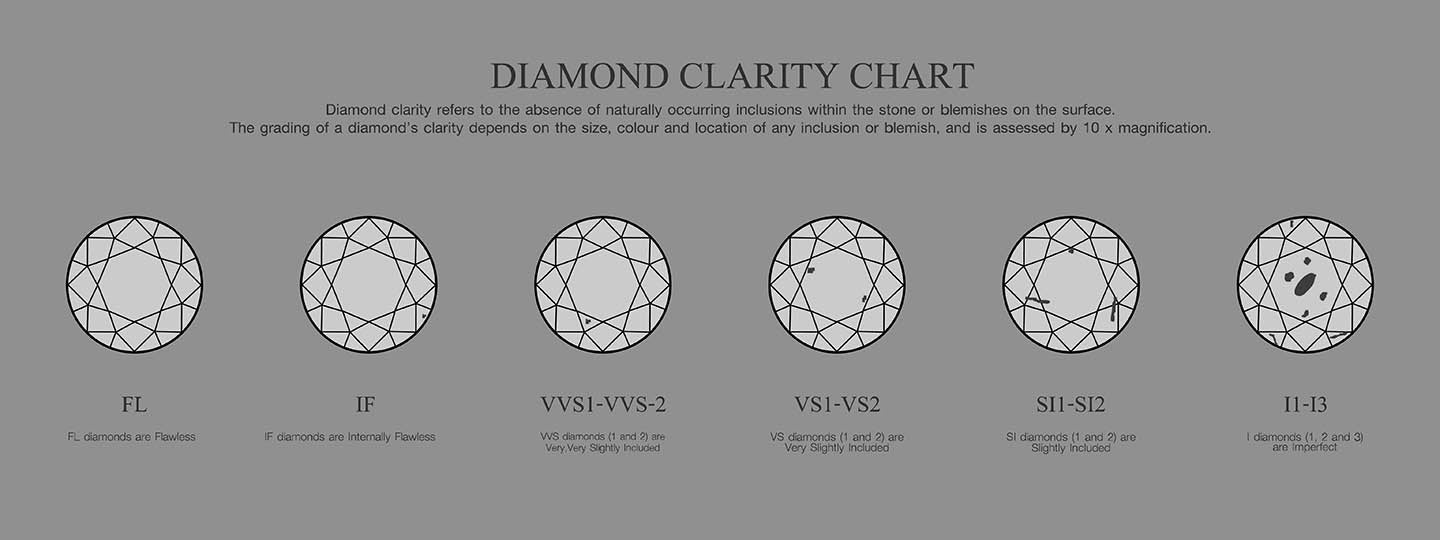Guides
Understanding the 4C's of Diamonds
Learn how cut, color, clarity, and carat work together to define a diamond’s quality.
Learn how cut, color, clarity, and carat work together to define a diamond’s quality.

To rewrite a popular phrase, "the delight is in the details." A diamond's aesthetic value and overall design are important elements to remember. Therefore, it is equally important to understand factors that influence those attributes: cut, color, clarity and carat – the 4 Cs.
The 4C’s are the global standard for measuring a diamond's value and beauty. They eliminate guesswork when you want to buy diamonds and can help you choose the most beautiful stone based on industry-approved science and measures, allowing you to get your money’s worth.
Let's take a deep dive into the 4 Cs of diamonds…
Master gemologists have a keen understanding of how light behaves when it interacts with diamonds, whether they are naturally mined or lab-grown. They have perfected the art of sculpting a diamond into a shape that enhances its brilliance, employing precise angles and proportions. These specialists imbue each diamond with the ideal symmetry, proportion, and polish, crafting not just a cut stone, but an alluring centerpiece for any piece of jewelry.
The cut of a diamond is integral to its value, determining the overall shape and how it interacts with light. This is where the weight of a diamond is considered, the center stone, the larger diamond, or even the total diamond weight for jewelry featuring multiple stones.
The proportions of a diamond, which refer to its width, depth, and table size, dictate its light reflection abilities. A diamond cut to optimal proportions will have a depth and table size that enhances light reflection, while an ideal width ensures light hits just the right angles to maximize refraction.
Skillfully cut lab-grown diamonds have a unique characteristic: no matter the angle from which light enters the stone, it is always directed to exit through the top. This remarkable effect is only achievable with the perfect balance of brilliance (white light) and fire (intense, dispersed flashes of color). Such a diamond is not just a stone but a symphony of light and reflections.

The color of a diamond can reveal much about its purity. The whitest diamonds are often the purest, while colored diamonds are known to carry trace elements, with yellow tints being quite common.
While colorless diamonds command higher prices due to their purity, diamonds that contain color, even lab-grown diamonds, are not to be overlooked. Although lab-grown diamonds don't form in the ground where impurities accumulate and manifest as gray, brown, or yellow tints, these can still appear in laboratory settings, giving each stone a unique character.
The color of a diamond, determined by its hue (original color), tone (degree of light or dark color), and saturation (depth and intensity of color), has a profound impact on its value and quality. To consistently grade the color of diamonds, The Gemological Institute of America (GIA) established the International Color Scale.
Using this scale, a five-person jury unanimously decides a diamond's color grade before it receives certification. The scale ranges from 'D' (pure white) to 'Z' (noticeable color), with each letter signifying varying degrees of gray, brown, and yellow in a white diamond. The closer a diamond's color is to 'D', the purer its hue, and thus the more valuable the stone.
A diamond's color significantly influences its overall price, whether at wholesale or retail. Even the slightest color variations can alter the final price by as much as 10%, adding hundreds, if not thousands, of dollars to the cost of a diamond. Thus, color is a critical factor when considering the 4C's—clarity, cut, color, and carat weight.

Diamond clarity refers to the absence of inclusions or imperfections, with these natural elements affecting the way light refracts through the diamond. Keep in mind that no diamond, whether it's a larger diamond, center stone or even a lab-grown single stone, is completely pure. Any diamond with minimal to no flaws is a rare piece of jewelry and considered highly valuable.
To determine a diamond's clarity, a 10x magnification lens is typically employed, with the clarity grade decided based on the size, position, and contrast of each imperfection. A qualitative grading system is used to assign distinct numerical values, helping to clearly distinguish one diamond from another.
Even lab-grown diamonds can form microscopic characteristics, often referred to as 'flaws' or 'inclusions,' during their creation stage. The fewer the trapped imperfections within the diamond, the more beautiful the diamond appears.
Diamonds with larger carat weight, due to their bigger facets, can reveal micro characteristics within the stone. In step-cut shapes such as Asscher cut or emerald cut diamonds, the open table and shallow pavilion amplify the stone's overall clarity, potentially highlighting any inherent micro characteristics.
These microscopic features, varying from diamond to diamond, are illustrated on 'diamond plots.' Reputable gemological labs like IGI and GIA measure each diamond using a clarity scale ranging from 'included' to 'flawless.' Clarity ratings for diamonds vary, including grades such as FL/IF, VVS1, VVS2, VS1, VS2, SI1, and SI2.
With clarity being an important component of the 4C's, it greatly influences a diamond's overall appeal and value.

A universally recognized standard for diamond weight, the carat (not to be confused with karat, a measure of gold purity), plays a crucial role in buying diamonds. One carat (or ct) diamond weighs precisely 0.20 grams. Notably, the carat represents the weight and not the size of a diamond, which is measured in millimeters (length by width) or the diameter of the diamond.
Diamonds come in various shapes and carat weights, and a diamond cutter's main aim is to optimize carat weight. This focus is because the larger the diamond, the rarer and more expensive it becomes. Diamonds are meticulously weighed, down to the nearest 0.01ct. Carat weight became a standardized measurement after its universal adoption in 1907 and is a common reference point on every diamond certificate, irrespective of the certifying institution.
Although each diamond is unique, their visual size can be approximated, especially since modern diamonds are cut with machines for precision. A 1ct round diamond will typically have a ~6.40mm length/width, while a 1ct Princess diamond will measure ~5.50mm. Keep in mind that a carat is a weight, and a diamond's measurement in millimeters can vary depending on how it's cut.
An essential factor to remember is that diamond pricing increases exponentially, not linearly, as carat weight goes up. There are critical weights at which the price jumps, including 0.30ct, 0.40ct, 0.50ct, 0.70ct, 0.90ct, 1.00ct, 1.50ct, 2.00ct, 3.00ct, 4.00ct, 5.00ct, and 10.00ct. Therefore, it might be advantageous to purchase a diamond slightly below these critical weights.
While carat weight tends to be the most visible and popular of the 4 C's of diamond quality, it's crucial to balance it with the other factors. As you increase the carat weight within your budget, you may need to make compromises on the remaining 3 C’s — cut, color, and clarity. Conversely, if you improve the other C’s, you may need to opt for a lower carat. A larger carat size might take up more of the hand, but without maximizing the cut and clarity, a bigger diamond could lose some of its sparkle.
